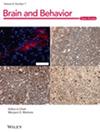An Exploratory Analysis of Rhythmic Auditory Stimulation's Impact on Brain Function in Parkinson's Disease Patients With Freezing of Gait
Abstract
Introduction
Freezing of gait (FOG) is a debilitating symptom in Parkinson's disease (PD) patients that severely impairs mobility. Rhythmic auditory stimulation (RAS) has demonstrated potential in improving gait, but the mechanisms underlying its efficacy remain unclear. This study explored the impact of RAS on brain function in PD patients with FOG using functional near-infrared spectroscopy (fNIRS) during an imagined walking task, with the aim of elucidating the underlying mechanisms involved.
Methods
We enrolled 45 PD patients, comprising 21 with FOG (PD+FOG), 24 without FOG (PD-FOG), and 10 healthy controls (HC). Using a 53-channel fNIRS system, we measured the oxygenated hemoglobin (oxy-Hb) content in brain regions as subjects performed an imagined walking task both with and without RAS. Dynamic functional connectivity and k-means clustering were employed to identify key brain connectivity states. Data processing was conducted using MATLAB R2014a, with one-way ANOVA to select channels of interest, followed by paired t-tests for comparative analysis.
Results
PD+FOG patients showed significantly lower activation in the supplementary motor area (SMA) and the left primary motor cortex of the lower limb (M1-LL) without RAS compared to PD-FOG patients and HC. RAS significantly increased activation in these areas and altered functional connectivity, characterized by an increased frequency of transitions between low-strength and medium-strength connectivity states in PD+FOG patients.
Conclusion
RAS may ameliorate gait in FOG patients by activating key motor areas (SMA and left M1-LL) and modulating the dynamic regulation of brain connectivity. This research provides valuable insights into the neural processes involved in the therapeutic effects of RAS.


 求助内容:
求助内容: 应助结果提醒方式:
应助结果提醒方式:


